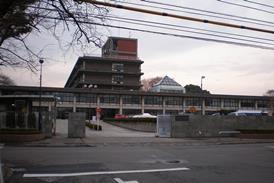Close menu
- Home
-
News
- Back to parent navigation item
- News
- Traction and rolling stock
- Passenger
- High speed
- Freight
- Infrastructure
- Policy
- Technology
- Ticketing
- Business
- Research, training and skills
- Accessibility and inclusion
- People
- Urban rail news
- Suburban and commuter rail
- Metro
- Light rail and tram
- Monorail and peoplemover
- Regions
- InnoTrans
- In depth
- Events
- Data
- Maps
- Tenders & Jobs
- Sponsored content
- Insights
Nvidia partnership spurs Hitachi Rail’s condition monitoring drive
By Railway Gazette International2024-10-04T11:00:00

INNOTRANS: Backed by a partnership with processor specialist Nvidia, Hitachi Rail has launched its HMAX condition monitoring suite, which has a strong focus on using revenue-earning vehicles to collect data and edge computing to process it rapidly. Nick Kingsley spoke with Hitachi Rail’s Koji Agatsuma when the product was launched at InnoTrans.
Already have an account? LOG IN
To continue…
You’ve reached your limit of content for the month














